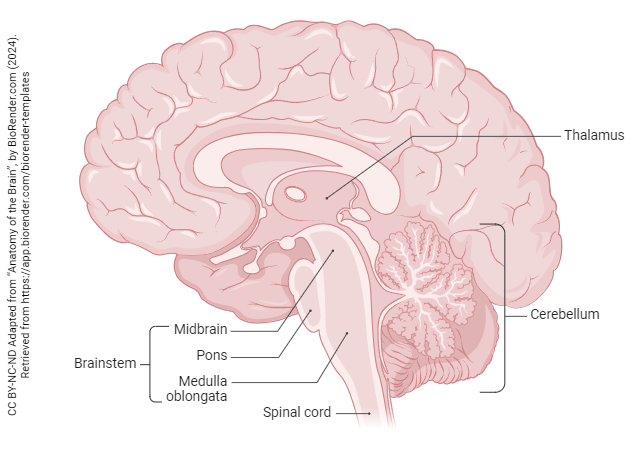The Pons, Medulla, and Cerebellum
Rachel Jessop and Jim Hutchins
Objective
1. Learn about the remaining two structures making up the brainstem — the pons and medulla oblongata.

We already discussed that the brainstem comprises three major parts – the midbrain (discussed in the previous chapter), pons, and medulla oblongata.
The pons is a band of fibers that acts as an important merging spot for many cerebral structures, especially the cerebellum. It handles many unconscious tasks, such as coordinating movement, regulating breathing, and controlling sleep-wake cycles. It is also an important connection point for cranial nerves V, VI, VII, and VIII.
The medulla oblongata is directly attached to the spinal cord. It is an integral crossover point for neural movement tracts, which is why, for the most part, we see the opposite side of the brain controlling one side of the body (i.e. a thrombus in the right middle cerebral artery can cause motor dysfunction in the left face and arm). It is also responsible for controlling heart rate, breathing, and circulation, as well as automatic processes such as vomiting and sneezing. Therefore, severe injury to the medulla usually results in death.
Also seen on this diagram is the cerebellum, whose connections exist outside the cerebrum. Its major function is to regulate movement and balance. It is an incredibly dense structure, as it is much smaller than the cerebrum but contains about the same amount of neurons.

